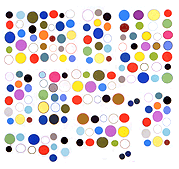Excerpt from a Mike Kelley/Glenn O'Brien conversation, via NEWSgrist:
GO: I've remembered an event and thought I'd said something when actually it was somebody else who said it or vice versa. I think, especially in writing, so much of plagiarism is completely unconscious.
MK: I have experienced that often. I've stolen ideas, and people have stolen from me. I'm all for it. That's the way things get created. That's how culture grows. When there's an amazing idea, you take it and run with it. I mean, you're going to take it someplace else than the source anyway. There are a lot of artists who've worked at that specifically. One of my favorite writers is the Comte de Lautréamont, and much of his writing is constructed from plagiarized texts. Who would claim that his work is no different than what he plagiarized?
GO: One thing that the Internet seems to be doing is eroding the idea of copyright and originality. People are just taking bits of things and using them in a very free way.
MK: That's great. And the corporate entertainment industry is trying to stop it from happening. Think about it: Andy Warhol could not have a career now. He would be sued every two seconds.
GO: It's given a lot of work to the lawyers.
MK: Copyright laws are terrible for culture. It's illegal to respond to the imagery that surrounds you; you're bombarded every minute of the day with mass-media sludge. It should be the opposite: Everybody should have to respond to it. This is what should be taught in the public school system.
William S. Burroughs should be a major role model: All students should be given tape recorders and cameras to constantly record the gray veil that surrounds them, so that they can recognize that it's even there--and manipulate it. Most people are not aware of the white noise they exist in. Tape recording and photography allowed people to become aware of what was invisible to them for the first time. We're surrounded by invisibility. That's what I think art can do--make things visible.
The part in boldface should be repeated like a catechism when you go to sleep at night, to counteract the endless media sludge of your day, for example, what I just heard on the radio at the deli against my will: "The NY Times magazine has two different covers this week, one with Tom Cruise and..." Who gives a flip about that? Really.

